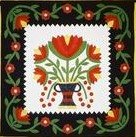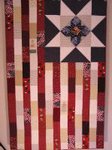Updated 3/2017-- all links (except to my own posts) removed
as many are no longer active and it was easier than checking each one.
I use the form of liposuction commonly called traditional though it is more accurately called superwet suction-assisted liposuction (SAL). Why don’t I use ultrasound or laser assisted? Cost mainly. I find it difficult to purchase all the latest and greatest equipment. I find it difficult to ask the hospitals/surgery centers I work at to do the same when I’m not sure I can guarantee them patients numbers needed to recoup the costs.
Superwet SAL has worked well for me and my patients. I have found that the greatest improvements to liposuction since it’s introduction by Illouz in the 1980s have been the addition of the wetting technique and the improvement in cannula size (specifically much smaller ones available than the early years).
I have been trained to use ultrasonic liposuction and have used it, but without renting equipment it is not available routinely at all the facilities I work. SAL is.
I wanted to state all the above before delving into the article “Updates and Advances in Liposuction” (full reference below) as a way of full disclosure. The article is a very nice review of liposuction.
The authors point out the key elements to not just achieving a good result but to maintaining it. Points which should be made to each patient:
A successful body contouring patient must satisfy four key elements to achieve and maintain optimal results.
1. Lifestyle change
2. Regular exercise
3. Well-balanced diet
4. Body contouring
Notice the surgeon is only important in the last one. The individual is the key in long-term satisfaction with liposuction.
In discussing the addition of wetting solutions (often lumped together incorrectly and simple called tumescent), the authors point out that initially when liposuction was done without any wetting solutions the blood loss was often up to 45% of the aspirate. The addition of a wetting solution greatly reduces the amount of blood lost.
All of the formulations of wetting solution include some variant of fluid (NS/LR), epinephrine, and lidocaine. Wetting solutions are used in three techniques: wet, superwet, and tumescent.
The wet technique involves instillation of 200 to 300 mL of solution per area to be treated, regardless of the amount aspirated.
The superwet technique employs an infiltration of 1 mL per estimated mL of expected aspirate, and this is the technique practiced at our institution.
Tumescent infiltration, popularized by Klein, involves infiltration of wetting solution that creates significant tissue turgor and results in infiltration of 3 to 4 mL of wetting solution per mL aspirated.
Recent data suggest that, for patients undergoing general anesthesia with the superwet technique, the lidocaine component may be reduced and/or eliminated without postoperative sequela of increased pain.
I tend to use only epinephrine and not any lidocaine in my wetting solution. I have a (healthy?) fear of lidocaine toxicity and since my liposuction patients have general anesthesia decided years ago there was no need for the added lidocaine.
Traditional liposuction is referred to as suction- assisted liposuction (SAL). Other liposuction modalities include ultrasound-assisted liposuction (UAL), vaser-assisted liposuction (VAL), power-assisted liposuction (PAL), and laser-assisted liposuction (LAL).
SAL remains the most common modality for liposuction. As mentioned above, it is the one I use. SAL uses variable-size cannulas and an external source of suction for removal of the aspirated fat.
PAL involves an external power source driving the cannula. Advocates of PAL contend that it is best used for large volumes, fibrous areas, and revision liposuction.
UAL utilizes ultrasound energy to break down fat and allow removal. With this technique, fat is emulsified, which allows removal through traditional liposuction cannulas. This modality requires a superwet environment.
Advantages include less surgeon fatigue, as well as improved results in fibrous areas and in secondary procedures.
Disadvantages have been reported to include larger incisions, longer operative times, and the possibility of thermal injury.
VAL uses a newer generation ultrasound-assisted liposuction device. The system uses less energy, decreasing its thermal component to the tissues. VAL may be better than the other modalities in large-volume liposuction as it has less blood loss.
This is what the article has to say regarding LAL (bold emphasis is mine):
LAL has been at the forefront of marketing hype for the past several years. The treatment involves insertion of a laser fiber via a small skin incision. Depending on the manufacturer, the fiber may either be housed within a cannula or stand alone. …. Most companies and physicians utilizing this technique employ a four-stage technique: infiltration, application of energy to the subcutaneous tissues, evacuation, and subdermal skin stimulation. …… Currently, these devices are being heavily marketed for purported skin-tightening effects. The belief is that the heating of the subdermal tissue may in fact be the contributing factor for LAL’s possible skin tightening effect. No large, prospective trials have been undertaken to examine the benefits of LAL over existing technologies, so unfortunately, most of the reports remain anecdotal.
Liposuction is a shaping technique, not a weight-loss solution. Liposuction will also not treat cellulite and can in fact make it appear worse.
Risks should be discussed with patients as with they are with all surgical procedure. The risks common to all modalities of liposuction include contour deformity, ecchymosis, edema, seroma, infection, paresthesia/dysesthesia, anesthesia and cardiac complications, cannula trauma to skin and/or internal organs, volume loss/overload from bleeding or excess fluid administration, hypothermia, deep venous thrombosis (DVT)/ pulmonary embolism (PE), and death.
In a questionnaire to board-certified members of ASAPS, Hughes reported a significant increase in complications when liposuction was combined with other procedures. This increase in the complication rate was most notable in liposuction combined with abdominoplasty. …….
Incidence of DVT in liposuction has been reported at <1%, but a marked increase in this percentage is demonstrated when liposuction is combined with other surgery (abdominoplasty/belt lipectomy).
Prolonged edema can occur up to three months from surgery and is best treated with supportive care and lymphatic massage.
Postoperative paresthesia/dysesthesia can occur in all forms of liposuction, is usually reversible, but may take up to 10 weeks to recover. Improvement of paresthesia/dyesthesia issues are generally felt to be quicker with SAL than with UAL. The newer technologies have not been investigated in this manner.
The most common postoperative complication from liposuction is contour deformity, which can occur in up to 20% of patients.
REFERENCES
Stephan, Phillip J., Kenkel, Jeffrey M.; Updates and Advances in Liposuction;
Aesthetic Surgery Journal January 2010 , 30: 1: 83-97, doi:10.1177/1090820X10362728
























 The hexagons can then be sewn together by hand or machine. If by machine, use a faggoting or zigzag stitch.
The hexagons can then be sewn together by hand or machine. If by machine, use a faggoting or zigzag stitch.